Rustic Wood Farmhouse Table Top from Reclaimed Lumber

I’ve always wanted a rustic wood farmhouse table. I wanted a table that looked worn, well-loved and appeared to be over 100 years old. It’s very hard to achieve that look with new lumber. To get that rustic look, you either need old reclaimed lumber or the skills to stain and distress new wood. I chose the first option and bought reclaimed rafters from The ReUse Warehouse in Durham, NC.
They were very rustic to say the least. I was prepared to plane and glue them together myself, but I don’t own a planer (insert sad trombone sound.) Instead, I brought the rafters to Mark Kegler of Kegler’s Woodwerks. Mark has ALL the woodworking equipment and he convinced me to let him glue the tabletop together since I realized I also don’t have 5 bar clamps (Christmas wish list updated now.)
For fun I thought I’d show you the behind the scene pictures of the table top as it was being planed and ripped. That way you can view the process should you decide to piece together your own reclaimed lumber table top.
Behind the Scenes at the Shop:
First they ran a metal detector over the beams and then removed nails with an extractor.
Next, the rafters were fed through a planer to give them all a uniform thickness.
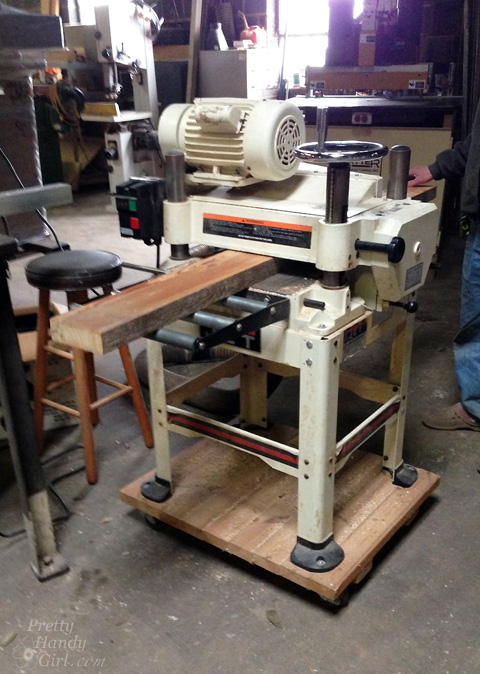
It was like Christmas morning watching the wood as it came out and I could see the of the beautiful grain revealed.
Mark and Randy used a straight line rip saw to cut the edges straight with the exception of two rafter edges that would be used for a live edge on the table. I was able to salvage the edges that they ripped off for later use.
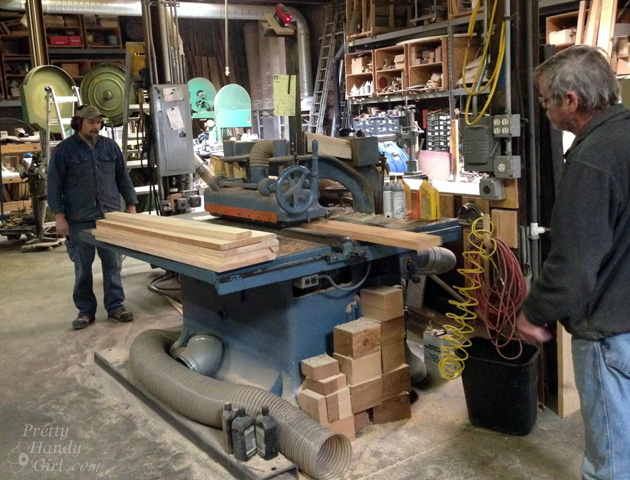
The boards were glued with wood glue and clamped together. Then they were left to cure overnight. In the morning, the short ends of the table were cut square.
Back at home I built the table base (the apron and legs).
Finishing the Reclaimed Wood Table Top:
Remember the salvage I kept from Mark’s shop? I used it to cap the table as edge band to hide the end grain. Hold the edge band up against the end, mark and cut the excess off.
Add wood glue to the inside of the edge band.
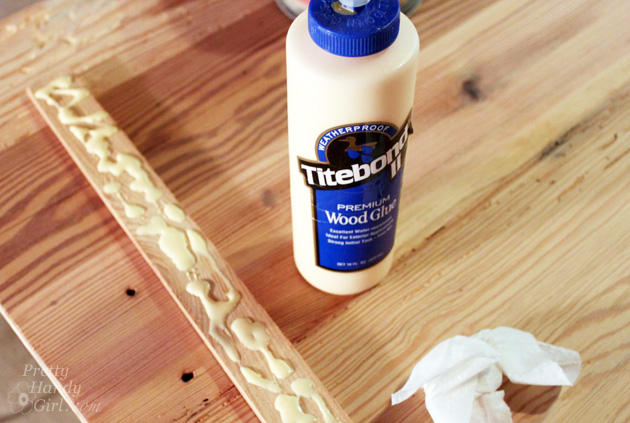
Attach the band to the table with finish nails.
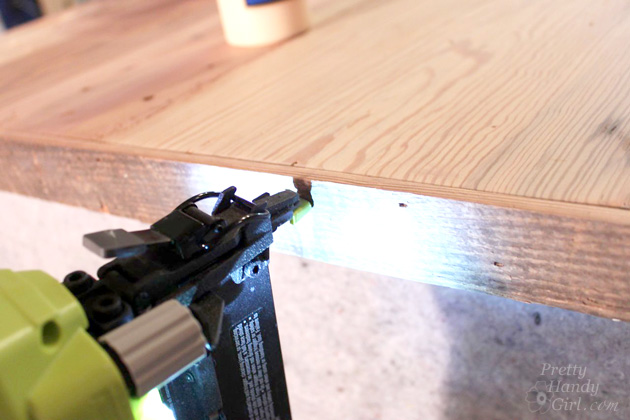
You can fill any voids, knots or holes while leaving the character with this method. Sand down the table with 180 grit sand paper. Give a final sanding with a 220 grit sandpaper.
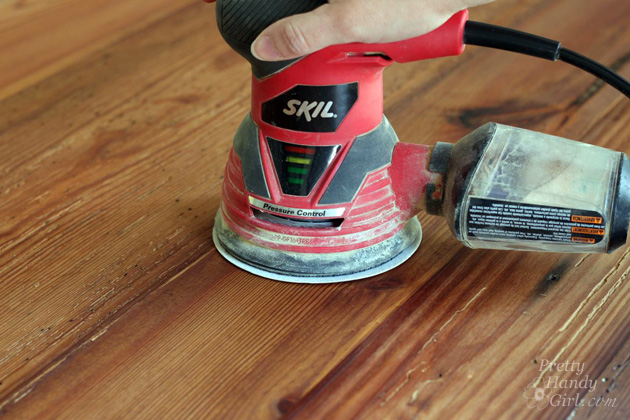
Wipe off the table with a damp rag. Apply two coats of natural stain. After the stain has dried, apply one coat of General Finishes Flat Finish Top Coat.
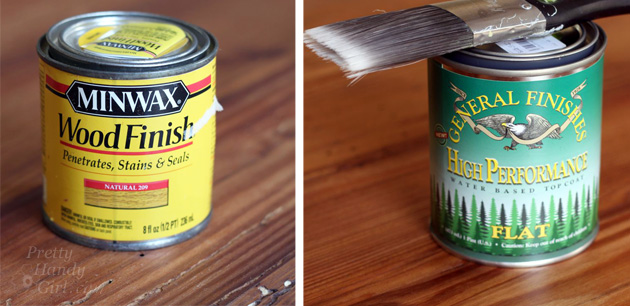
When the top coat has dried, lightly sand any rough edges or bumps. Vacuum up the dust and wipe with a damp rag. Then repeat with another coat of topcoat. (Add at least 4 coats of topcoat to a table.)
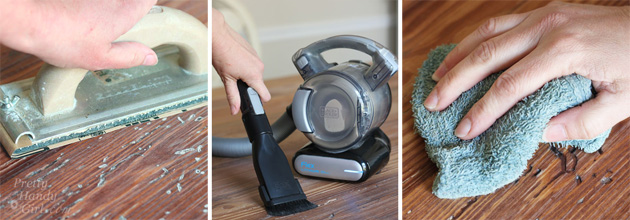
The table top is now protected from water and wear. To tone down the sheen and give the table an authentic antique waxed finish, apply a coat of Miss Mustard Seed’s Furniture Wax. Buff off the wax with a dry rag.
Attach the table to the table base as shown in this tutorial. Now your table is ready for your next dinner party!
The live edge and edge band gives the table a rustic but finished look.
One of the rafters has a hole drilled through it. I’m not sure what it was for, but I love the character it adds. Then again, I may change my mind if I happen to find uneaten broccoli stuffed inside the hole.
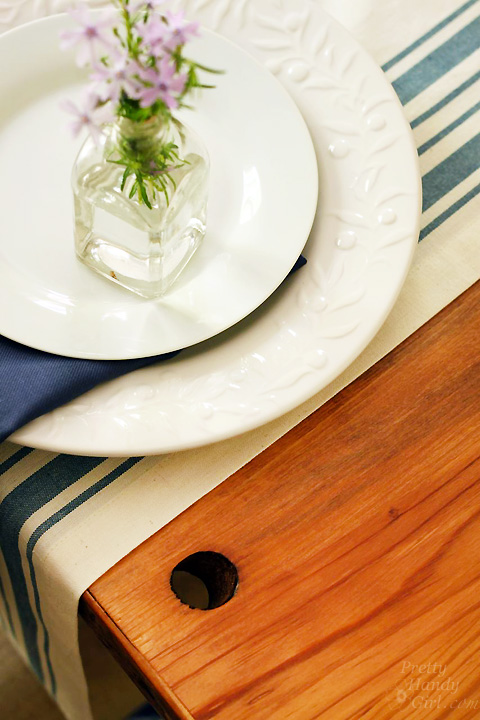
It’s time to put this beauty to use.
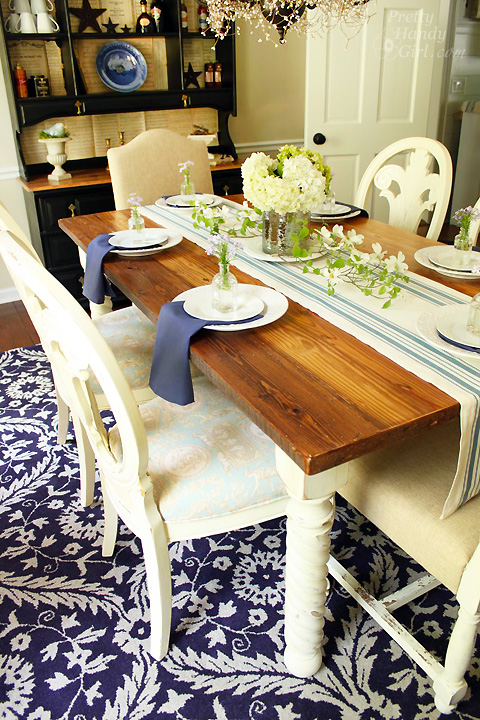
Sources:
Rope Twist Legs – Osborne Wood Products
Head chairs – World Market
Side chairs – Craig’s List
Table runner – World Market
Navy & White Rug – Rugs USA
You’ll definitely want to see the tutorial for distressing and aging the table and chair legs.
Pin for later!
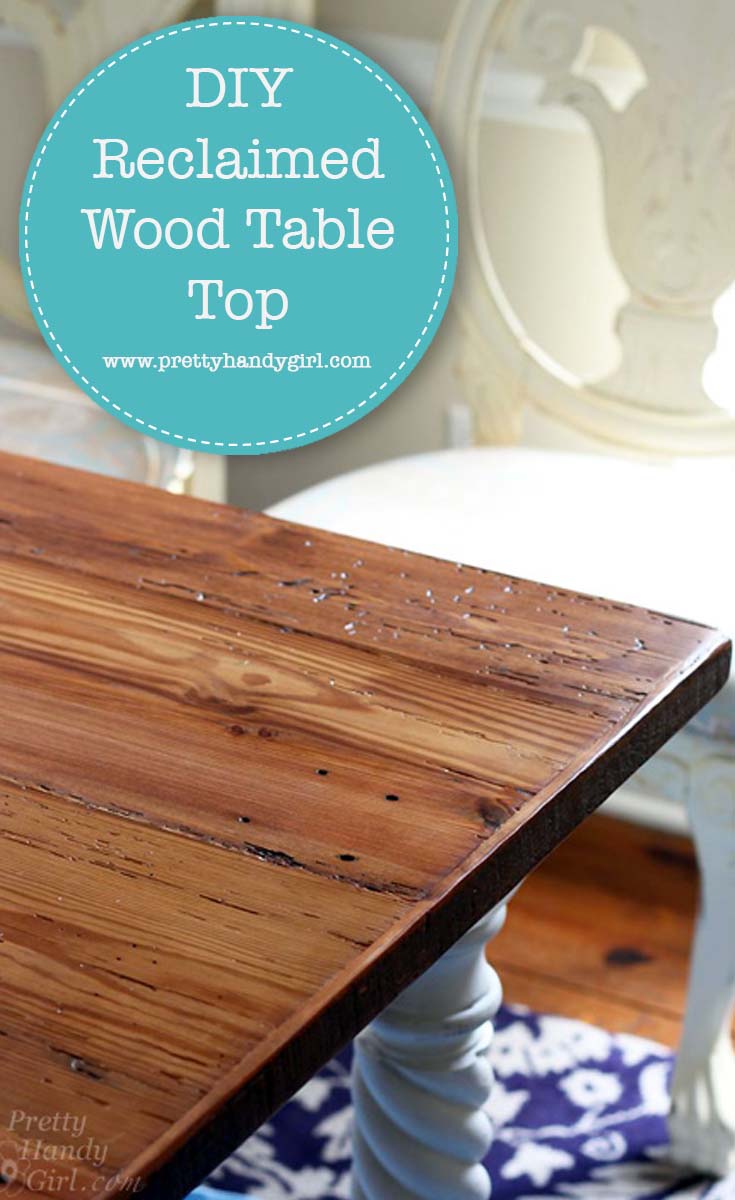

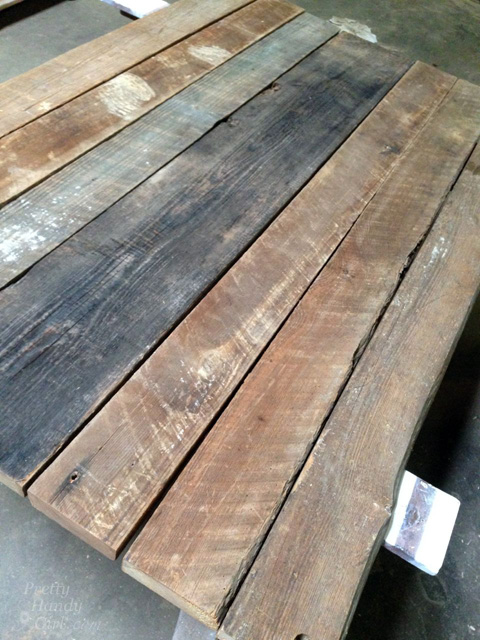

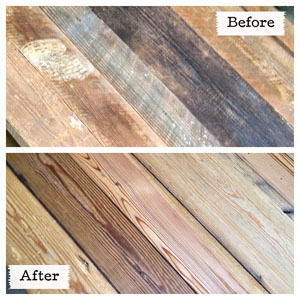
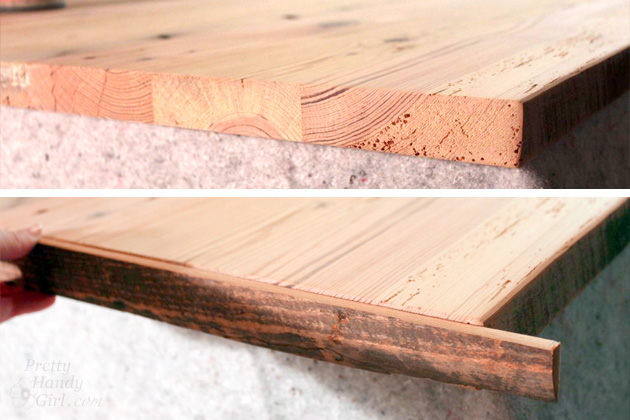

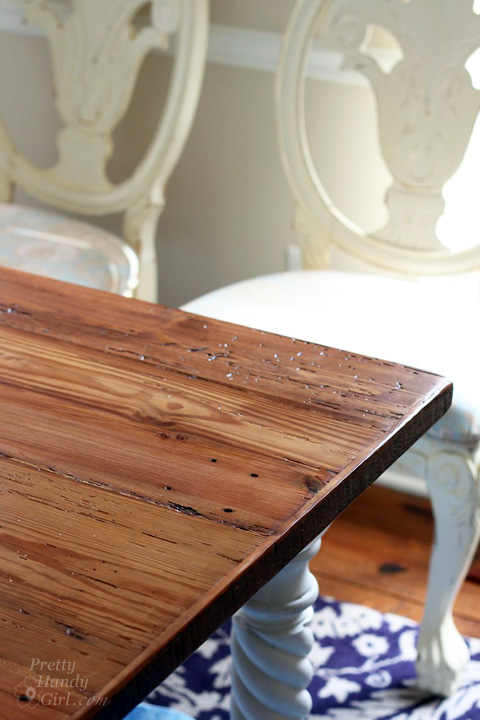
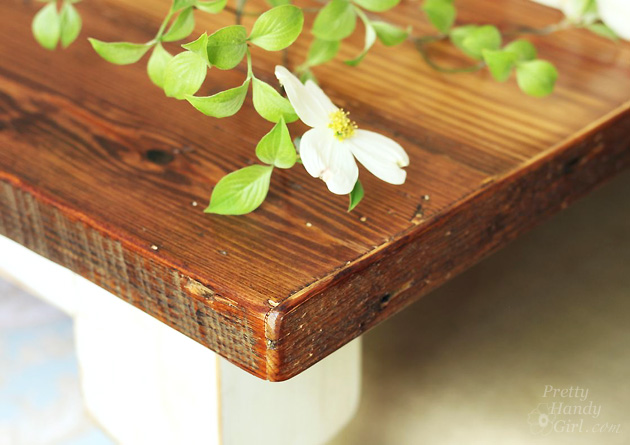
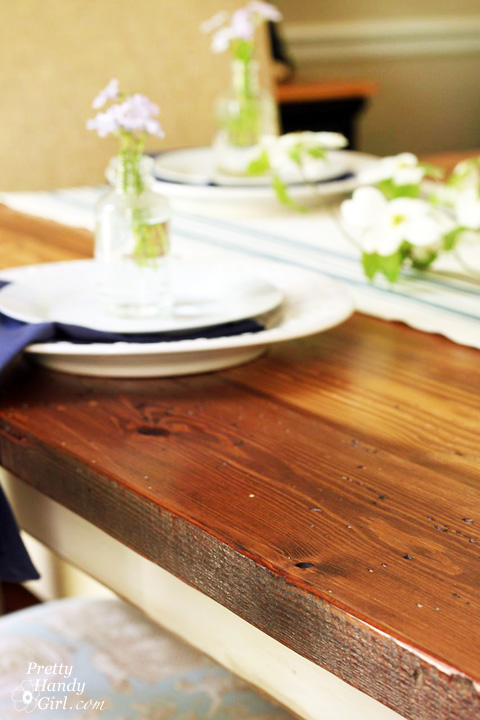
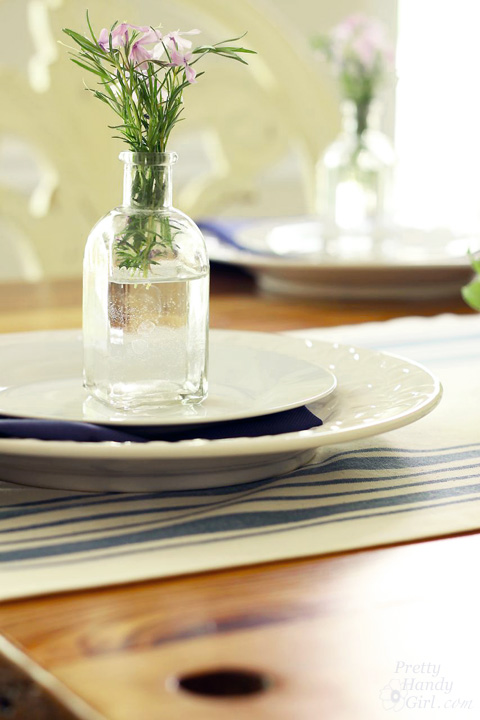

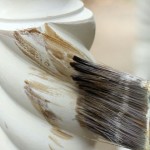
Hi! Did you sand/finish the edges the same as you did the table? I want to preserve the natural edges as you did, but wasn’t sure how much the 80 grit would remove.
Thanks!
Lucy, that’s a good question. I think I just used a light grit (220 grit) on the edges to retain the dark natural look. But, I did use a polyurethane and wax to finish the top and sides.
Awesome, thanks! Do you happen to recall how you got the corners to look uniformly rounded together like that? Did you sand that edge to be rounded? I’ve got the strips attached, but am struggling to blend them as well as you did!
Thanks!
Yes, I glued and nailed the end cap then sanded with a rough grit, medium grit and finally a fine grit.